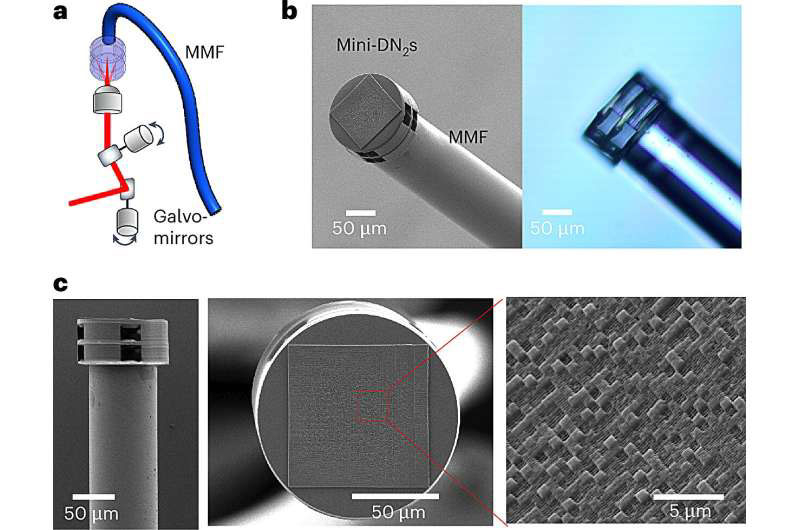Further development of optical technologies requires new approaches in the era of the rise of neural systems. The properties of light facilitate the primary processing of visual information directly in the optical fiber, which forces scientists to look for ways to implement such mechanisms in practice. A breakthrough in this area was reported by Chinese scientists who managed to embed an optical neural network into the end of an optical fiber to transmit images without distortion.

Image source: USST
Researchers from the Shanghai University of Science and Technology (USST) published a paper in the journal Nature Photonics, in which they described the development of a fiber-optic imaging technology for a minimally invasive endoscope. The scientists worked with multimode fiber (MMF) as a more capacious channel, which is as thin as a human hair. However, due to MMF’s tendency to scatter, they had to develop a number of solutions to reduce it. At the same time, the high bandwidth of MMF was seen as a critical tool in areas such as quantum information and microendoscopy.
Currently, modal dispersion compensation is performed using artificial neural networks and spatial light modulators, but these methods have only limited success in restoring distorted images after they are transmitted over multimode optical fiber. Scientists at USST set out to overcome this barrier by proposing a fundamentally new approach.
The researchers developed and integrated multilayer optical diffractive neural networks into the far end of a 35-centimeter optical fiber. These are specially etched transparent plates that refract light in a specific way, essentially performing basic computations at the speed of light. This solution allows for optical matrix multiplication and more connections in neural networks without the use of electrical circuits. This opens up possibilities for tasks such as optical image classification, decryption, and phase detection.

Image source: Nature Photonics 2025
The multilayer optical diffractive neural network plates were fabricated with sides of 150 μm. They allowed optical images with sides of 65 μm to be read and transmitted via optical fiber with a resolution of 4.9 μm. In particular, the scientists demonstrated the ability of the system to distinguish groups of HeLa cells that were not included in the training process. At the same time, the system provided high-quality optical reconstruction of the image, which highlights the potential of integrating miniaturized diffractive neural networks with multimode optical fiber. This creates an unprecedented platform for optical output at the micron scale, paving the way for the creation of multifunctional compact photonic systems applicable in medicine, science and quantum photonics.